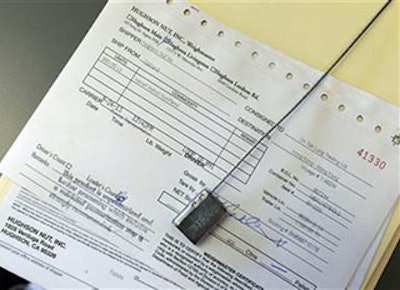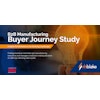
From managing complex supply chains to executing cost savings improvements, the manufacturing industry needs to keep a keen eye on the efficiency of their processes in order to be successful. But in my work with manufacturers, I’ve noticed a worrisome trend: manufacturers’ over-reliance on purchase orders (POs). By overusing POs, manufacturers are increasing the cost of their procurement process and overspending by relying on a process that causes supply chain inefficiency and gives manufacturing executives the illusion of control over their business processes.
Purchase orders are typically issued by a manufacturer for specific goods, parts and raw materials. They are a legal document that specifies pricing, quantities and other conditions when ordering product. Furthermore, POs are issued by a highly skilled purchasing department, whose job is to negotiate and secure the best prices, terms and other conditions for the products necessary for your business. The best organizations have purchasing teams that act seamlessly across the enterprise and can determine when POs should be issued and when they may not be necessary.
What’s happened, however, is that many manufacturers now issue POs for every transaction, even for services, office supplies and utilities.
At face value, this doesn’t sound like such a big problem. But by issuing POs for every transaction, manufacturers increase the overall cost of the purchasing process and dramatically complicate their internal processes. Costs go up because purchasing professionals (who are expensive) have to spend time creating PO’s and sending them to the vendors. Then, when the invoice comes in the AP department has to match the PO to the invoice and receipt. In our experience many manufacturers have a 30 percent exception rate in the matching process, which means those invoices are routed back to purchasing so they can amend the PO so it matches the invoice. This raises the costs still further. It also reduces the amount of time the procurement team can spend negotiating the purchase of crucial goods and raw materials for the business. It’s not unusual for many companies to create POs so they can match them to invoices that they already received!
In fact, in our experience the total cost of the procurement to payment process (P2P) for an item bought with a PO typically costs one and a half to two times as much to process as one bought without a PO. In addition, using PO’s eliminates the review of invoices by department managers who often find errors and other issues when reviewing invoices for approval.
As an example, one of our clients had a rule that anything bought for more than $5,000 had to have a PO. In practice this meant that many invoices arrived into the AP department who then had to route them to Purchasing so they could create a PO to match to the invoice. To fix this, we reengineered the process so Procurement only issued PO’s when they could add value in the purchasing of those specific goods and services by negotiating better pricing, terms or other conditions. The company regained control by electronically routing invoices to departmental managers for approval and they were held accountable monthly for their spending versus budget. The client’s procurement costs went down dramatically and their control increased as well since there was greater focus on budgets and spending by department.
Here are three ways manufacturers can save money and better control their business processes:
- Assess the need for issuing purchase orders. Do you issue POs for every business transaction? If so, you’re probably using too much of the procurement team’s valuable time – and dramatically increasing the overall costs of your P2P process. Examine how POs play a role in your business processes by doing a comprehensive deep dive into your existing business processes. Who controls purchasing and approvals? Are you issuing POs for costs like utilities or consulting services? A comprehensive assessment of what’s necessary versus what isn’t can generate big savings.
- Free up the capacity of your procurement professionals. Procurement professionals are skilled members of the team who ensure you’re getting the best prices for parts and raw materials necessary for your business. They aren’t paper pushers responsible for processing POs. Relieve your purchasing team of the burdens of issuing and processing unnecessary POs and allow them to focus on what they do best.
- Hold every department accountable. Instead of issuing POs for everything, you can have far more control over your operation by holding each department accountable for a specific budget. This also shifts responsibility to department mangers instead of relying on the purchasing team.
In the end, cost pressure may be the only thing that drives manufacturers to implement more efficient processes. With manufacturers negotiating complex supply chains, the total cost from procurement to payment is much higher when purchasing is involved in non-core items, and there’s no value in creating a PO for something that doesn’t need it. Time will tell if manufacturers will realize this before it’s too late.
David Schnitt is President and CEO of IQ BackOffice.
To read more manufacturing and technology news, sign up for our newsletter. You can also follow Manufacturing Business Technology on Twitter @MBTwebsite. You can also follow Manufacturing Business Technology on Twitter @MBTwebsite.























